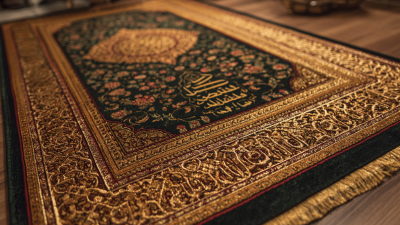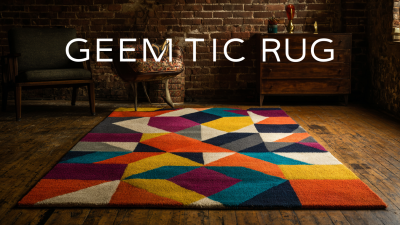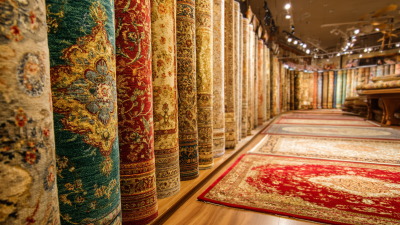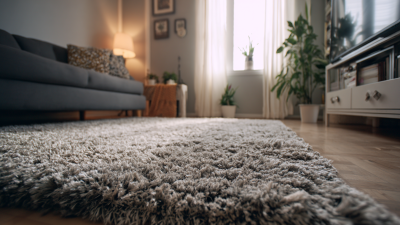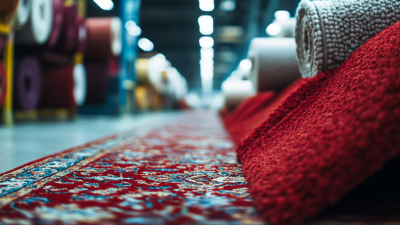
-
Home
-
About Us
-
Products
-
News
-
Blog
-
Contact Us
Leave Your Message

The increasing popularity of geometric rugs in home decor trends illustrates a significant shift in interior design choices that can be attributed to their versatile aesthetics and ability to complement various styles. As reported by the 2022 Home Decor Trends Study by the Amercian Home Furnishings Alliance, geometric patterns have emerged as a top choice among consumers, with 68% expressing a preference for bold, graphic designs that create a focal point in a room. This surge in demand for geometric rugs not only reflects changing consumer tastes but also highlights the blend of functionality and style, making these rugs a staple in modern interiors.
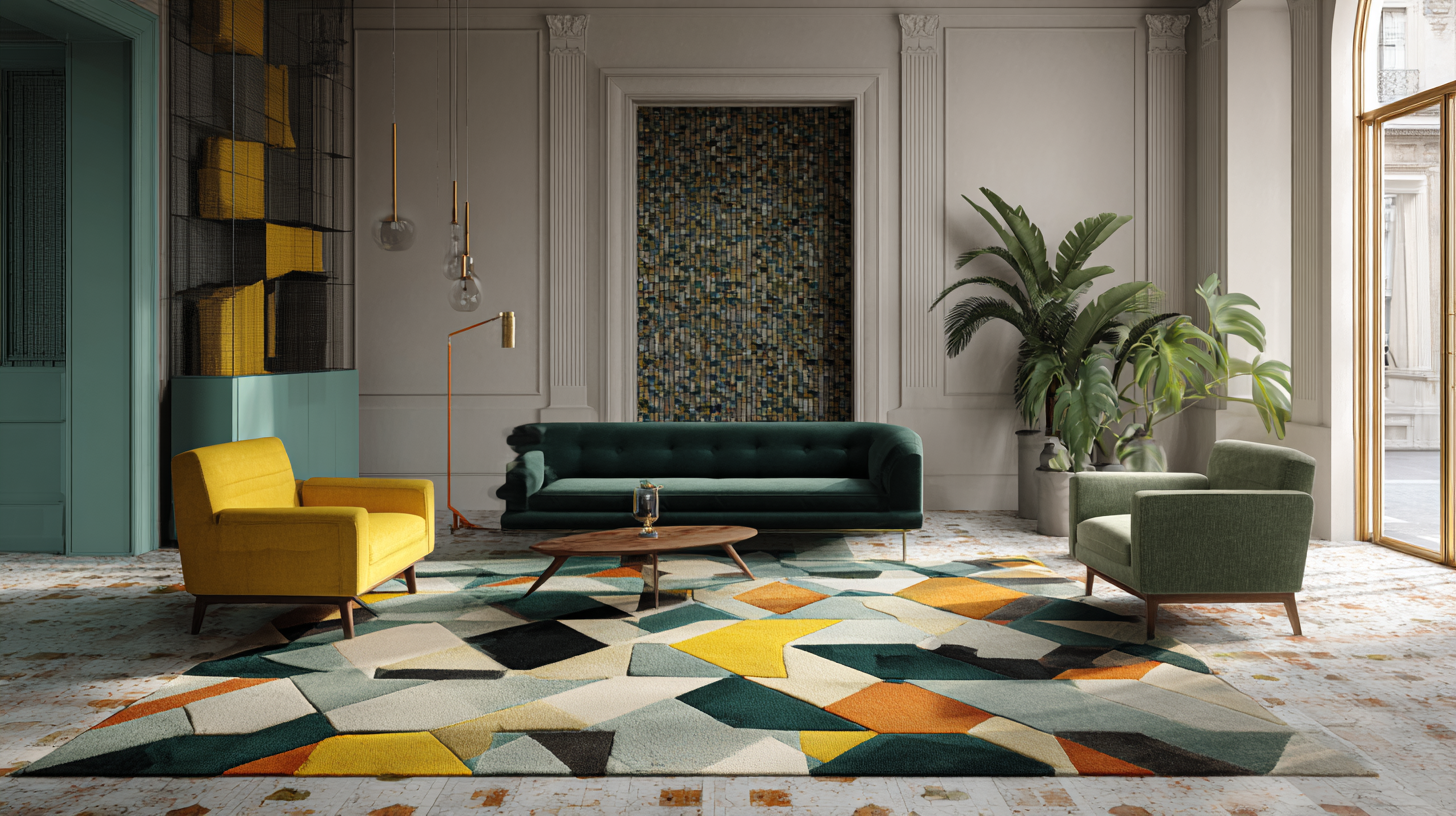
Furthermore, the global area rug market is projected to grow at a CAGR of 4.9% through 2027, with geometric designs playing a pivotal role in this expansion. As homeowners increasingly seek unique and contemporary solutions to elevate their spaces, geometric rugs are undeniably influencing decisions in interior design and shaping the future of home decor.
Geometric rugs have a rich historical background that significantly influences their role in contemporary interior design. Originating from various cultures, geometric patterns have been a staple in textiles since ancient times. For instance, Persian carpets, known for their intricate designs, often featured geometric shapes that conveyed culture and status. According to a report by the International Interior Design Association, geometric patterns were particularly prominent during the Art Deco movement in the early 20th century, which emphasized bold, streamlined designs and vibrant colors.
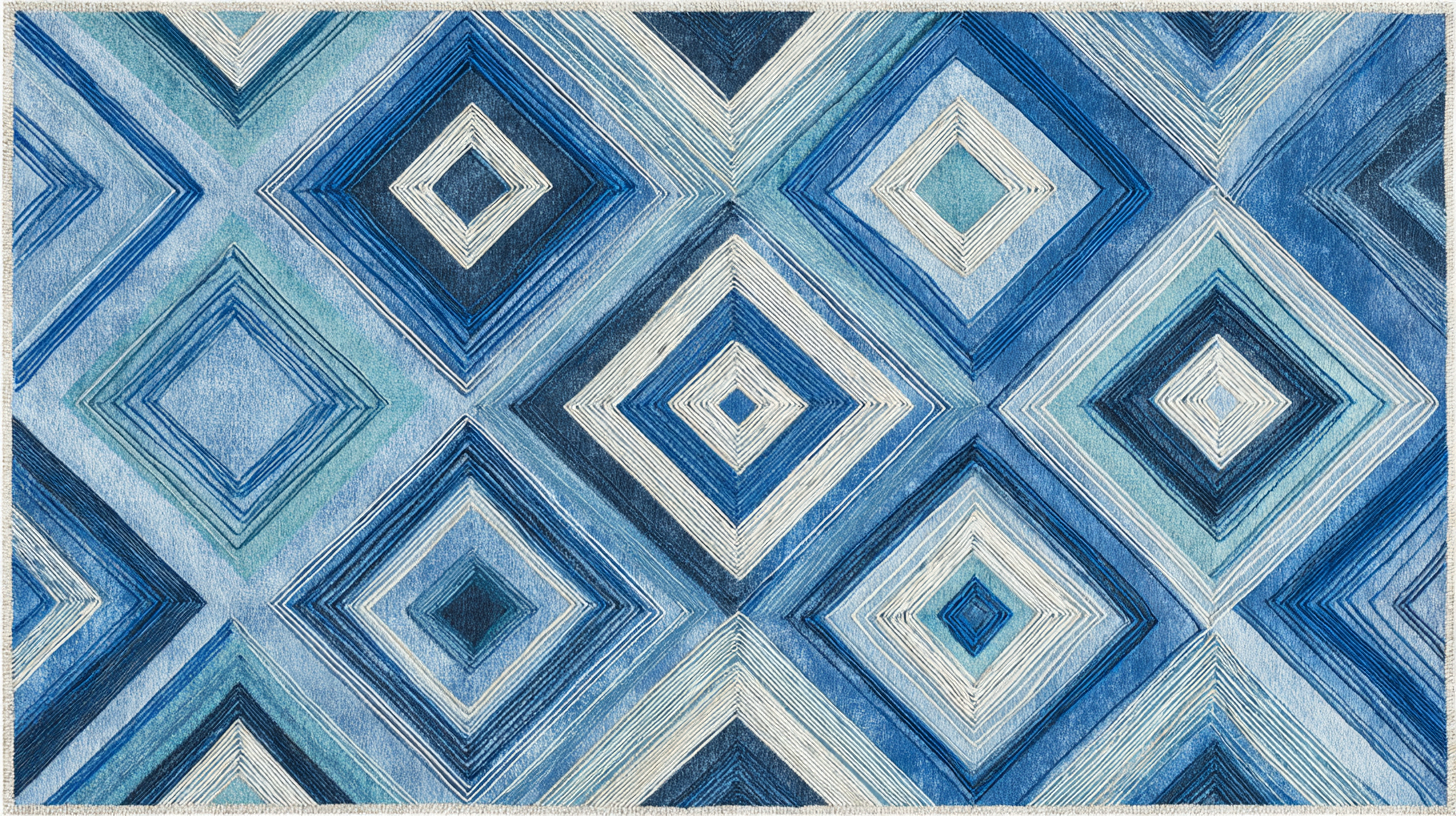
In recent years, the resurgence of geometric rugs can be linked to the growing trend of minimalism in interior design. A survey conducted by the National Retail Federation found that 62% of consumers prefer geometric designs as a means to add visual interest without overwhelming a space. The versatility of these rugs allows homeowners to incorporate them into various styles, from modern to eclectic. They not only enhance the aesthetic appeal of a room but also serve as focal points that anchor furniture arrangements and create a cohesive design narrative. The ongoing popularity of geometric patterns exemplifies their timelessness and adaptability in shaping interior design choices today.
Geometric rugs have increasingly captured the attention of designers and homeowners alike, becoming a staple in contemporary decor. Their trendiness can be attributed to several key characteristics that align perfectly with modern aesthetic preferences. Firstly, the versatility in patterns and shapes allows geometric rugs to complement a variety of interior styles, from minimalist to eclectic. Whether featuring bold, angular designs or subtle, interwoven shapes, these rugs can act as statement pieces or subtle enhancements, fitting seamlessly into diverse environments.
Another defining trait of geometric rugs is their ability to create visual interest and depth in a living space. By incorporating dynamic patterns, they can draw the eye and serve as focal points in a room, guiding the overall design narrative. Additionally, the tactile nature of high-quality materials used in these rugs contributes to their appeal, bringing comfort and warmth to hard surfaces. The juxtaposition of clean lines and vibrant colors in geometric designs fosters a sense of modernity, making them an attractive choice for anyone looking to update their home.
| Characteristic | Description | Popularity Rating (1-5) | Ideal Room |
|---|---|---|---|
| Bold Colors | Geometric rugs often feature vibrant colors that add a pop to any space. | 5 | Living Room |
| Versatile Patterns | Patterns can be tailored to fit both modern and traditional aesthetics. | 4 | Bedroom |
| Texture Variety | Different textures such as plush, flat-weave, or shag add depth to decor. | 4 | Home Office |
| Sustainability | Increased use of eco-friendly materials in production. | 3 | Dining Room |
| Cultural Influences | Inspiration from global textile traditions enhancing uniqueness. | 4 | Hallway |
The integration of geometric rugs in various design styles has become a pivotal aspect of contemporary interior decor. These rugs serve as versatile elements, seamlessly fitting into diverse aesthetics—from minimalism to bohemian to mid-century modern. In minimalist spaces, geometric patterns can add visual interest without overwhelming the simplicity of the environment; a well-placed rug can act as a focal point that draws the eye while complementing the overall understated elegance.
In bohemian designs, geometric rugs contribute a layer of texture and vibrancy, often serving as a canvas for layering other decor items. Their bold patterns and colors can enhance the eclectic spirit inherent in bohemian style, allowing homeowners to express their individuality. Similarly, in mid-century modern settings, geometric rugs echo the clean lines and organic shapes characteristic of the period, grounding the room and adding a touch of nostalgia while remaining fresh and contemporary. This adaptability underscores the enduring appeal of geometric rugs, making them a staple in modern interior design choices.
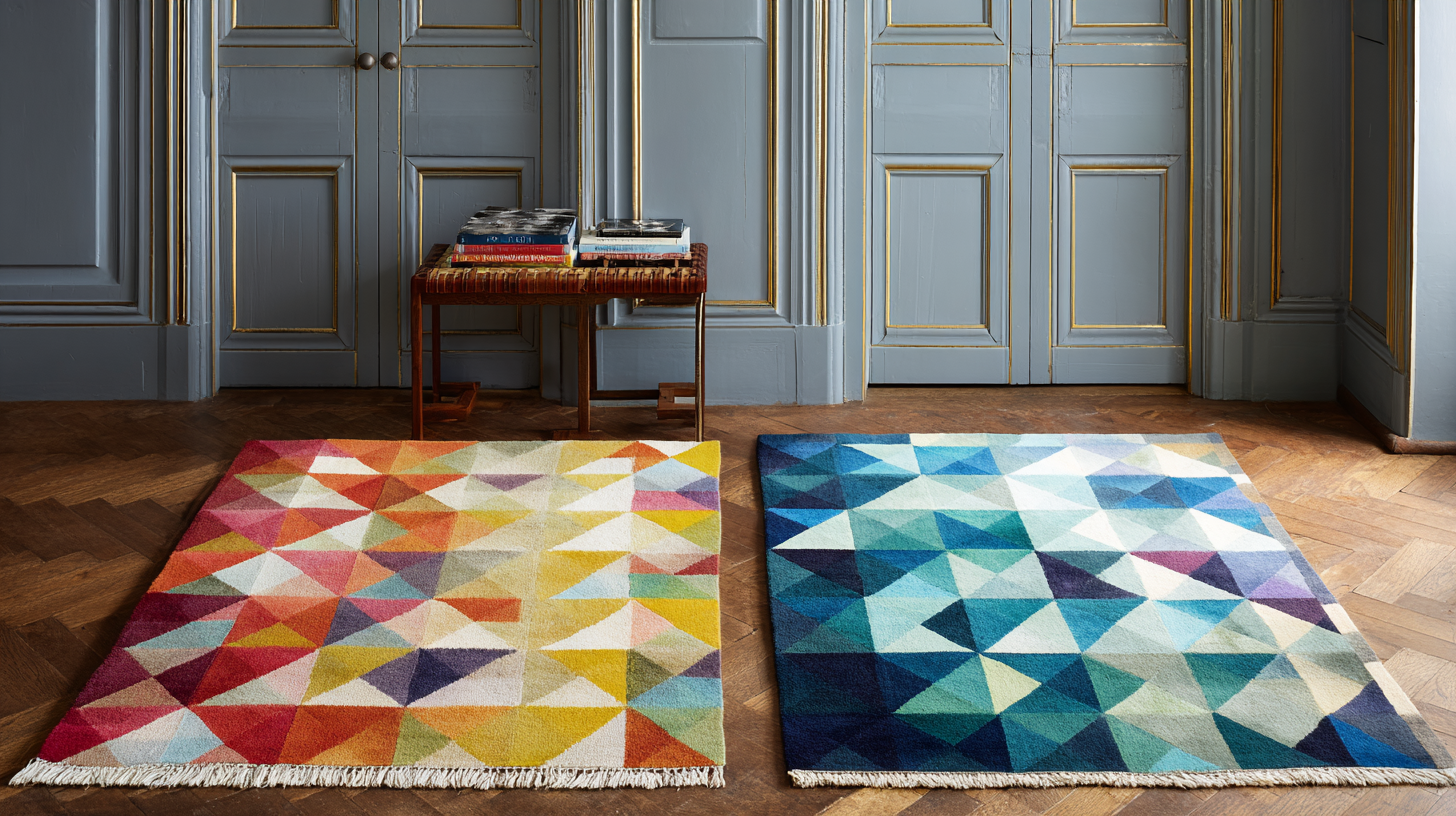
Geometric rugs have seen a significant resurgence in home decor trends, primarily due to their unique ability to influence color and texture choices within interior spaces. These rugs, rooted in centuries of tradition, bring a modern twist to any room, acting as statement pieces that draw the eye and create focal points. The variety of shapes and patterns available allows homeowners to pair these rugs with various design aesthetics, enhancing the overall ambiance of the space.
Moreover, the presence of geometric patterns often encourages bolder color palettes in accompanying decor elements. The interplay of shapes and hues can transform a room, making it feel more dynamic and visually stimulating. As homeowners incorporate geometrical rug designs, they are more likely to experiment with complementary colors and textures, enabling them to curate cohesive and sophisticated interiors. This trend not only reflects personal style but also reinvigorates traditional design principles, proving that geometric rugs are as much about function as they are about form.
Geometric rugs have seen a significant rise in popularity within home decor trends, influenced by their versatility and contemporary aesthetic. According to recent industry reports, geometric patterns not only add visual interest but also serve as focal points that can define and enhance various interior styles. The 2025 design landscape reflects a strong preference for bold shapes and colors, making these rugs ideal for creating lively atmospheres in living spaces. Designers recommend integrating geometric rugs as a means to tie together contrasting elements in a room, effectively harmonizing diverse decor styles ranging from minimalist to eclectic.
When incorporating geometric rugs into home decor, it's essential to consider scale and color. For open floor plans, layering multiple rugs can create a cohesive look while offering comfort and style. Professional advice highlights that using large geometric patterns in neutral tones can help anchor a room, while smaller, vibrant geometric designs can add pops of energy and personality. Complementary accessories, such as cushions or artwork, can be chosen to echo shapes or colors from the rug, ensuring a well-coordinated decor. Overall, the right geometric rug can not only enhance the aesthetic appeal of a space but also reflect emerging trends that prioritize creativity and personalization in interior design.
